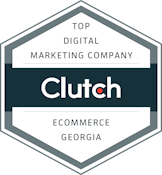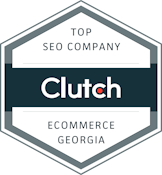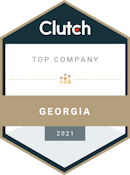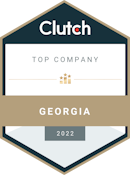Understanding Value-Based Bidding in Google Ads: Maximizing Conversion Value and ROI
Value-based bidding in Google Ads shifts campaign optimization from traditional cost-per-click models to focusing on the actual value each conversion delivers. Advertisers assign different values to various conversion actions, allowing Google�27s machine learning algorithms to prioritize bids that generate the highest return on ad spend. The 2025 updates introduce more granular data signals and improved predictive models, enabling more precise budget allocation toward outcomes that matter most, such as customer lifetime value and conversion quality rather than sheer volume.

This approach leverages insights into user behavior and purchase intent, helping campaigns maximize profitability instead of just traffic. As noted in the original Search Engine Land article, �22Value-based bidding transforms the way advertisers think about their campaigns, shifting the focus from cost efficiency to value efficiency.�22 Mastering this strategy offers a pathway to smarter spending and stronger business results.
How Value-Based Bidding Works
Value-based bidding prioritizes conversions based on their monetary contribution to a business. Advertisers assign specific values to actions like purchases, sign-ups, or leads, and Google�27s algorithms dynamically adjust bids to maximize overall return on ad spend. The system interprets signals such as user intent and historical performance to predict which clicks are likely to yield high-value outcomes.
The 2025 enhancements incorporate detailed data inputs, including customer lifetime value and cross-device behavior, allowing more accurate forecasting of conversion worth. This enables campaigns to focus on profitability by prioritizing high-value customers, leading to better budget allocation and improved long-term results.
Implementing Value-Based Bidding
Effective use of value-based bidding requires clear understanding and accurate assignment of conversion values within the sales funnel. Collaboration between marketing and sales teams ensures these values reflect true business impact. Once established, Google�27s automated bidding optimizes bids in real time to capture the most valuable traffic.
The 2025 updates also provide greater transparency and control, allowing advertisers to monitor performance closely and make data-driven adjustments. This approach encourages measuring success by the quality and profitability of conversions rather than volume, aligning advertising efforts with business goals.
Profit-Based Bidding: Refining Campaign Optimization
Profit-based bidding builds on value-based bidding by integrating actual profit margins into bidding decisions. This method aligns ad spend with the true financial outcomes of each conversion, factoring in costs and margins to avoid pursuing high-value conversions that may not be profitable.
Implementing profit-based bidding requires deeper integration of data systems, such as CRM platforms or ecommerce analytics, to supply accurate profit information. Advertisers set profit-on-ad-spend (POAS) targets, reflecting the bottom-line impact rather than just return on ad spend (ROAS). Though setup can be complex and demands careful calibration, this approach encourages a strategic mindset extending beyond advertising into pricing, fulfillment, and operations.
Economic pressures in 2025 make profit-based bidding especially relevant. With tighter margins and increased competition, this strategy helps ensure every advertising dollar contributes meaningfully to financial health. Testing profit-based bidding in controlled environments allows gradual adoption and refinement without disrupting existing campaigns.
Frequently Asked Questions About Value-Based Bidding
How are conversion values determined?
Conversion values should reflect the relative impact of different customer actions within the sales funnel. For example, purchases typically carry higher value than newsletter sign-ups, but variations exist based on product margins or customer lifetime value. Collaboration with sales and finance teams ensures these values represent real business outcomes, which is essential for effective bidding.
What data does Google Ads use to optimize bids?
Google Ads leverages signals including user behavior, device usage, and historical conversion data. The 2025 updates add granular data points like cross-device interactions and customer lifetime value metrics, enabling more precise bid adjustments that prioritize clicks likely to generate higher returns.
How does value-based bidding compare to traditional bidding in control and transparency?
While automated bidding delegates much decision-making to machine learning, recent improvements offer better reporting tools and customizable settings. Advertisers can monitor performance closely and adjust conversion values or campaign goals, maintaining strategic oversight alongside real-time optimization.
What are the practical steps to implement value-based bidding?
Accurate conversion tracking and meaningful conversion values aligned with business priorities are fundamental. Testing and iterating on these values reveal which customer segments or actions drive the most profit. Integrating marketing and sales data provides a comprehensive view of campaign impact, shifting focus from volume to quality and profitability.
Smarter Google Ads Campaigns Through Value and Profit
Mastering value-based and profit-based bidding enables advertisers to focus on the true impact of their campaigns. Assigning meaningful conversion values and incorporating profit considerations allows Google�27s machine learning to optimize bids aligned with financial goals. The 2025 enhancements offer greater precision and control, helping marketers prioritize quality over quantity and make data-driven decisions that improve return on ad spend and overall profitability. This approach strengthens the connection between advertising efforts and business outcomes, supporting smarter investment and sustainable growth.
Original article by Search Engine Land. As the article states, �22Value-based bidding transforms the way advertisers think about their campaigns, shifting the focus from cost efficiency to value efficiency.�22













.png)

